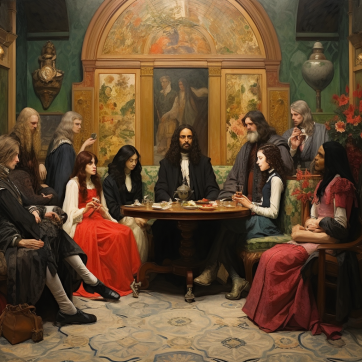A Fine Line Between Culture and Cultism
Founded in 1970 by Robert Earl Burton, the Fellowship of Friends aimed to provide a pathway to spiritual enlightenment through the teachings of George Gurdjieff and Peter Ouspensky, among other influences. However, the organization soon transformed into a controversial cult, taking on an elitist and exploitative character that drew both followers and sharp criticism.
“Burton infused the Fellowship with a unique blend of culture and esoteric teachings, making it initially attractive to many seekers,” observed religious studies scholar Helen Gardner.
The Doctrine: Fourth Way and Beyond
The Fourth Way teachings by Gurdjieff and Ouspensky became the spiritual backbone of the Fellowship of Friends. However, Burton added his own interpretations and prophecies, including an impending apocalypse. Members were encouraged to detach themselves from mainstream society to focus on their spiritual development.
“The doomsday element added a level of urgency and control, as members felt pressed to stay in the group for their own spiritual survival,” said cult expert Robert Davis.
Aesthetic Lifestyle as a Front
A striking feature of the Fellowship of Friends was its aesthetic emphasis. Located in a compound called Apollo, the organization invested heavily in fine art, classical music, and vintage wine, providing a veneer of cultural sophistication that masked its more questionable activities.
“The organization’s opulent lifestyle created an illusion of legitimacy, making it hard for outsiders to spot the more manipulative practices,” noted journalist Sarah Stevens.
Financial and Sexual Exploitation
Members were required to contribute a large portion of their income as a sign of their commitment. Alongside financial exploitation, allegations of sexual misconduct involving Burton came to light, adding to the growing controversy surrounding the Fellowship.
“The dual exploitation—financial and sexual—heightened the group’s manipulative and harmful nature,” stated legal analyst Patricia Hayes.
Legal Actions and Social Stigma
The Fellowship faced multiple lawsuits related to its exploitative practices. While Burton and the organization managed to survive these challenges, the controversies eroded their social standing and led to a decline in membership.
“Legal actions played a pivotal role in exposing the Fellowship’s darker aspects and initiating its downfall,” reported investigative journalist Mark Hamilton.
A Cautionary Tale for Spiritual Seekers
The Fellowship of Friends serves as a cautionary example of how spiritual organizations can deviate into cultism. Despite its continued existence, the group’s influence has waned significantly, and it stands as a case study for how manipulative practices can coexist with high-brow cultural pursuits.
“Robert Earl Burton and the Fellowship of Friends demonstrated that the line between spiritual guidance and cultism can be incredibly thin,” concluded sociologist Laura Simmons.
